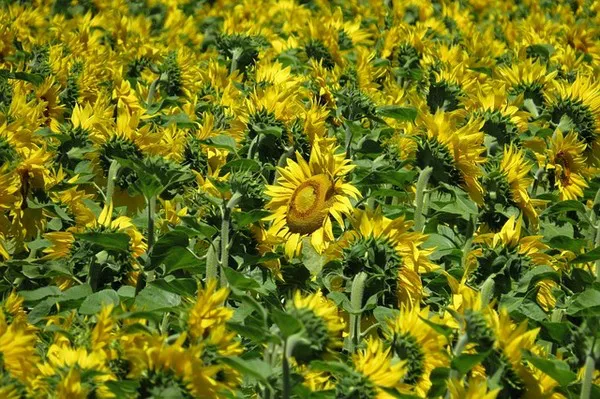Sunflowers, with their vibrant petals and towering stems, are a beloved symbol of summer and joy. These majestic plants not only enhance our gardens but also brighten our spirits. However, as with all living organisms, sunflowers have a natural lifecycle that eventually leads to their demise. While the sight of wilting sunflowers can be disheartening, there are proactive and environmentally responsible steps that can be taken to honor the end of their life cycle. In this article, we will discuss strategies for dealing with deceased sunflowers that encompass both practical gardening techniques and eco-conscious considerations.
1. Observe and Understand the Lifecycle
Understanding the natural lifecycle of sunflowers is essential for effectively managing their end-of-life care. Sunflowers generally go through several stages: germination, growth, flowering, seed development, and eventual senescence. Senescence is the final stage of a sunflower’s life, characterized by wilting, drooping petals, and a general decline in vitality. This is a natural process, and recognizing when a sunflower has reached this stage is the first step in knowing how to proceed.
2. Leave the Flowers for Wildlife
One of the most environmentally responsible actions to take when sunflowers die is to leave them in place. Dried sunflower heads, while no longer visually striking, have a unique beauty in their own right and can serve as a valuable food source for local wildlife. Birds, in particular, are attracted to sunflower seeds, providing them with much-needed sustenance. By leaving the sunflower heads intact, you contribute to the ecological balance of your garden, fostering a habitat that supports various species.
3. Collect and Save Seeds
Before the sunflower heads completely wither, consider harvesting the seeds for future planting or for culinary use. Sunflower seeds are not only a delicious and nutritious snack for humans but also hold the potential for the growth of new sunflower plants in the next growing season. To collect seeds, wait until the flower head has dried on the stem and the seeds have become loose. Gently rub the seeds out of the head and store them in a dry, airtight container. Remember to label the container with the sunflower variety and the year of collection.
4. Utilize the Deceased Sunflowers
The various parts of deceased sunflowers can find purpose in different ways. For instance, the stalks can be used as support stakes for other plants, and the dried flower heads can be employed in craft projects. Consider creating decorative wreaths or arrangements using the dried sunflower heads, adding an artistic touch to your living spaces. Alternatively, crush the dried petals and use them as natural mulch or compost material to nourish the soil for future plantings.
5. Composting for Sustainability
When sunflowers die, they still have much to offer the ecosystem. Composting provides an excellent opportunity to recycle these plant materials in an environmentally friendly manner. Sunflower stalks and leaves can be broken down into nutrient-rich compost that enriches the soil, fostering healthy plant growth in the future. However, be cautious when composting sunflower heads that have been exposed to pests or diseases to prevent potential spread. In such cases, it may be best to discard these parts to avoid contamination.
6. Reflection and Reevaluation
The end of a sunflower’s life can be a moment for personal reflection and an opportunity to reevaluate your gardening practices. Consider keeping a gardening journal to document your observations and experiences. Reflect on the growth of the sunflowers, the challenges faced, and the lessons learned. Use this reflection as a foundation for improving your gardening techniques and enhancing the health and vitality of your future plantings.
7. Plan for Successive Plantings
The end of one sunflower’s life can mark the beginning of another’s. By planning successive plantings, you ensure a continuous cycle of growth and beauty in your garden. Research different sunflower varieties that thrive in your region and have staggered bloom times. This way, as one group of sunflowers reaches the end of its life, the next batch will be ready to take its place, maintaining the vibrancy of your garden.
Conclusion
The lifecycle of a sunflower is a journey that encompasses growth, vitality, and eventual decline. While the sight of withering sunflowers can evoke a sense of loss, it’s essential to recognize the valuable contributions these plants make even in their end-of-life phase. From providing sustenance for wildlife to yielding seeds for future growth, sunflowers continue to enrich the environment long after their petals have faded. By implementing the strategies outlined in this article, you can honor the lifecycle of sunflowers and contribute to a more sustainable and vibrant gardening practice.


